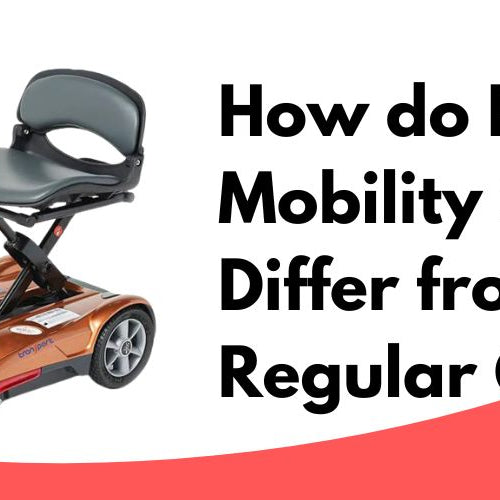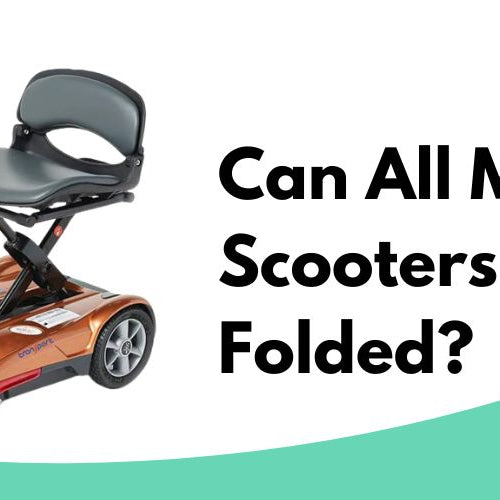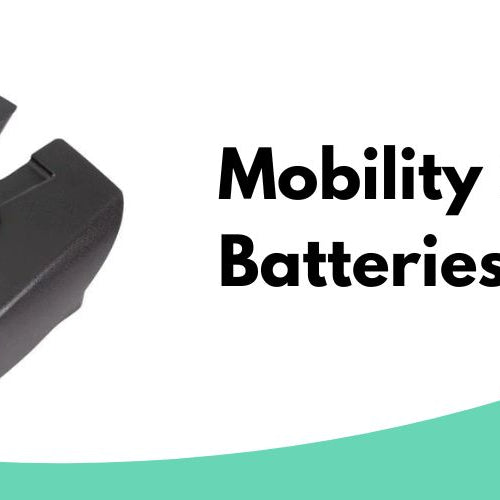Electric wheelchairs significantly improve the mobility and independence of those who require assistance moving about. These powered chairs are designed to be operated by the user, reducing the need for secondary assistance. However, one may wonder if there are situations where an electric wheelchair can be pushed manually.
The short answer is yes, electric wheelchairs can be pushed, but this typically requires the motor to be disengaged first. This is achieved through the use of manual freewheel levers located on the motors, which once disengaged, allows the chair to be moved manually by a caregiver or a loved one. It's essential to note that although pushing an electric wheelchair is possible, it may be challenging over long periods as the chairs are not specifically designed for this purpose.
Understanding the capabilities of electric wheelchairs and their potential limitations is crucial for ensuring the maximum comfort and safety of the user. By being informed about the possibility of manually pushing an electric wheelchair, caregivers and users can better prepare for any unforeseen circumstances that may require alternative methods of transportation.
Shop our electric wheelchairs that can be manually pushed today at Mobility Nest!
Electric Wheelchair Basics
Electric wheelchairs, also known as power chairs, offer enhanced mobility for those who have difficulty using manual wheelchairs. These mobility devices are typically heavier than their manual counterparts due to the added weight of the battery, motors, and joystick control system. Despite their weight, electric wheelchairs often provide greater comfort and independence for users.
Many power chairs utilize a rear-wheel drive system, which offers greater control and stability during movement. They are often built with mid-wheel drive or front-wheel drive, allowing for tighter turning radius and better maneuverability in various environments. One of the main features of an electric wheelchair is its user-friendly joystick control, which allows the user to navigate their power chair with ease.
Regarding the question of whether electric wheelchairs can be pushed, the answer is yes. Most electric wheelchairs can be pushed manually by disengaging the motor, usually with a few clicks or levers source. This enables caregivers or loved ones to assist when necessary.
However, it is important to note that electric wheelchairs are designed for independent use and not intended for regular manual pushing source. As such, they may not have rear handles for easy pushing or may have some resistance to manual pushing as a safety feature to avoid rolling too quickly source.
In summary, electric wheelchairs provide greater autonomy and ease of movement for users than manual wheelchairs. They can be pushed manually when necessary, although they are not designed for constant manual assistance. Understanding the basics of electric wheelchairs helps to ensure optimal usage and care for the mobility device.
Pushing Electric Wheelchairs
Pushing an Electric Wheelchair
It is possible to push an electric wheelchair manually when necessary. To do this, the motors need to be disengaged with a few clicks, allowing the wheelchair to roll freely without damaging the motor components. The manual freewheel levers are typically mounted on each motor and can be identified by their brightly colored tips.
Before pushing the wheelchair, ensure you switch it off and engage the freewheel levers by turning them until they click. Once disengaged, the electric brakes will be deactivated, allowing a caregiver or loved one to push the wheelchair manually.
Electric wheelchairs tend to be heavier than manual ones, and they often lack rear handles designed for pushing. This may make pushing an electric wheelchair challenging, especially over long periods or on an incline. As a result, consider the weight and ergonomic design of the wheelchair when evaluating its suitability for manual pushing.
Pushed Manually
Although electric wheelchairs are designed to minimize dependence on secondary assistance, there may be instances where manual pushing is necessary, such as when the power source is depleted or in case of an emergency. By disengaging the motors, you can ensure that manually pushing the wheelchair won't cause damage.
Remember that pushing an electric wheelchair is not its intended use, so it's important to rely on the built-in power source and controls whenever possible. Manual pushing should only be used as a last resort in situations where it is unavoidable.
Safety and Assistance
Slopes and Incline Factors
When dealing with electric wheelchairs, it's essential to consider slopes and inclines. Due to their weight and design, electric wheelchairs might be challenging to handle on steep surfaces. While some models offer additional stability features for tackling minor slopes, users should exercise caution to avoid injury or accidents.
When it comes to pushing an electric wheelchair, the motor can be disengaged, allowing anyone to manually push the wheelchair. While this can be helpful on flat surfaces, additional care should be taken when pushing an electric wheelchair up or down inclines.
Secondary Assistance
Despite the convenience electric wheelchairs provide, some scenarios might require additional assistance. For instance, users may need help from caregivers when disengaging the freewheel levers to switch from electric to manual mode, as it may involve bending down, pushing, and pulling.
Moreover, for caregivers assisting electric wheelchair users, secondary controls are available. These controls often come as wireless remotes, allowing caregivers to take full control of the wheelchair without manually pushing it. This feature provides a safer and more comfortable experience for both the user and the caregiver, promoting personal freedom and reducing the risk of injury.
In summary, electric wheelchairs can be pushed, but safety and assistance should always be considered, especially when navigating slopes and inclines. Users should seek help from caregivers when required, and utilizing secondary controls can ensure a safer experience.
Battery and Power Considerations
Battery Life Issues
One of the main concerns when using an electric wheelchair is battery life. Most electric wheelchairs are powered by rechargeable batteries, which need to be charged regularly to ensure optimal performance. Typically, electric wheelchair users should charge their batteries per the manufacturer's specifications to avoid any issues or disruptions to their mobility.
However, there may be situations where a battery runs out unexpectedly or reaches the end of its life. In such cases, it's important to know whether an electric wheelchair can be pushed manually. Most electric wheelchairs allow for manual pushing by disengaging the motors, which can be done with a few clicks or levers. This is particularly useful when battery life is low or when the wheelchair user requires assistance on challenging terrain, such as uphill or inclines.
When transporting or storing an electric wheelchair, it is essential to consider proper battery storage and handling. One should avoid exposing batteries to extreme temperatures or environments, as this could negatively impact battery life and performance. In addition, it is essential to maintain the batteries properly and replace them when necessary to ensure a reliable and consistent power source for the wheelchair.
Some electric wheelchairs may also offer adjustable battery settings or accept various battery types, giving users more control over their wheelchair's performance and handling. By understanding the specific battery requirements and maintenance recommendations for a particular electric wheelchair, users can prevent battery-related concerns and maximize their mobility and independence.
Specific Electric Wheelchair Models
Merits Health Chair
The Merits Health Chair is an electric wheelchair that is designed for easy maneuverability and user comfort. This model can be pushed manually, thanks to its rear handles, which provide support for a caregiver or loved one to push the chair when necessary. To enable manual pushing, the user simply needs to disengage the motor by using the manual freewheel lever, which is conveniently accessible and identifiable.
It is important to note that handling different types of terrain may impact the ease of pushing the electric wheelchair manually. The Merits Health Chair is equipped to handle various terrains with its sturdy wheels and adaptable suspension system, but certain surfaces may still pose challenges when pushing manually.
Pride Go Chair
The Pride Go Chair is another popular electric wheelchair model that can be pushed manually when needed. To enable manual pushing, the user must locate and engage the manual freewheel lever mounted on each motor. These levers, identifiable by their bright yellow tip, allow the drive motors to be disengaged so that the chair can be pushed manually.
While the Pride Go Chair is also designed to handle different terrains, users should be aware that manual pushing may require more effort on rough or uneven surfaces. As with the Merits Health Chair, the Pride Go Chair's manual freewheel levers must be used properly to avoid causing damage to the motors when pushing the wheelchair by hand.
Conclusion
In summary, electric wheelchairs can be pushed under certain circumstances. Most electric wheelchairs have the ability to disengage the motor, allowing for manual pushing when needed. However, it is important to note that electric wheelchairs are not specifically designed for this purpose, as their primary function is to be powered by a motor and battery system.
When deciding to push an electric wheelchair, it's crucial to follow the manufacturer's guidelines and instructions for disengaging the motor. This will ensure the wheelchair functions correctly and is not damaged in the process.
Taking into consideration the weight of the wheelchair, manually pushing an electric wheelchair might become tiresome or exhausting, especially when going uphill or along raised surfaces. Therefore, it's essential to keep the battery charged according to the manufacturer's specifications to minimize the need for manual pushing.
Safety should always be a priority when operating electric wheelchairs. By understanding the capabilities and limitations of these devices, users can avoid unforeseen challenges and ensure a smooth and comfortable experience.






Leave a comment